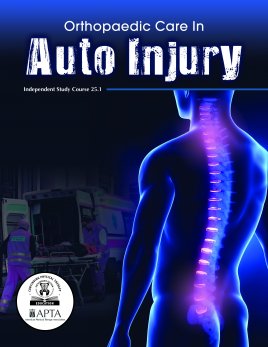
Orthopaedic Care in Auto Injury
Contact Hours: 0
| Online Only | |
|---|---|
| APTA Orthopaedic Member | $35 |
| Non-APTA Orthopaedic Member | $50 |
Note: CEUs are not offered for this course.
Course Description
This 3-monograph set addresses the unique aspects of evaluating and treating the patient following an automobile accident. Using an evidence-based approach, the authors present classification models and special considerations that need to be included to achieve an ideal outcome for this type of patient. Unique legal aspects of care are also covered. These include documentation, expert witness, and disclosure protocols for auto accident patients.
Course Overview
Course Format: Online
Course Objectives
- Review the current literature and apply findings to the musculoskeletal management of patients with cervical and upper thoracic spine injuries following an automobile injury.
- Discuss the evidence underlying motor vehicle trauma with regard to the neuromuscular somatosensory systems and its influence on tissue healing.
- Discuss the unique assessment and disposition of a patient following a traumatic automobile injury to the cervical and/or upper thoracic spine dysfunction.
- Perform the key tests to assess the tolerance to shear, torque, and compressive forces at the lumbar spine.
- Identify the key red flags in the subjective evaluation of the spine following auto injury.
- Design a treatment plan that is progressive and optimizes healing.
- Apply classification systems to categorize and treat spine injuries and highlight the distinguishing aspects of examination that differentiate between these categories.
- Discuss the biopsychosocial approach treatment of the lumbar spine after a motor vehicle accident.
- Utilize strategies to decrease fear-avoidance behaviors and encourage confrontational strategies in a patient recovering from an injury as a result of a motor vehicle accident.
- Discuss the importance of patient education for appropriate self-pain and ergonomic management techniques following motor vehicle accident injury.
- Discuss the unique legal obligation requirements for treating patients who have been injured in an auto accident.
- Effectively interact with auto injury patients, safeguarding the legal positions and rights of treating physical therapists and patients under care.
- Discuss the role of the therapist in communicating with legal counsel when caring for patients following an auto accident.
- Review the role of a physical therapist as percipient and expert witnesses in administrative and judicial proceedings.
- Review clinical documentation and communication protocols taking into account the legal protection of the patient and physical therapist.
- Develop, in consultation with practice attorneys, legally and ethically correct patient informed consent and disclosure protocols for auto accident patients and workers’ compensation clients under care.
- Understand the responsibility of the physical therapist in preventing reimbursement fraud.
Topics and Authors
- Evaluation and Treatment Strategies for Care of the Injured Cervical and Upper Thoracic Spine
Karen Walz, PT, MA, OCS, COMT, FAAOMPT - Evaluation and Treatment Strategies for Care of the Injured Lumbar Spine after a Motor Vehicle Accident (Includes 26 online accessible video clips)
Terry Pratt, PT, MS, COMT, FAAOMPT - Management of Auto Injuries: Legal and Documentation Perspectives
Ronald W. Scott, PT, JD, LLM, EDD, MSBA, Esquire
Add To Cart
Which version of the course would you like to purchase?
Members Only
You need to be a member to buy this course.
Join today to enjoy exclusive deals and prices on all courses.
Join Now